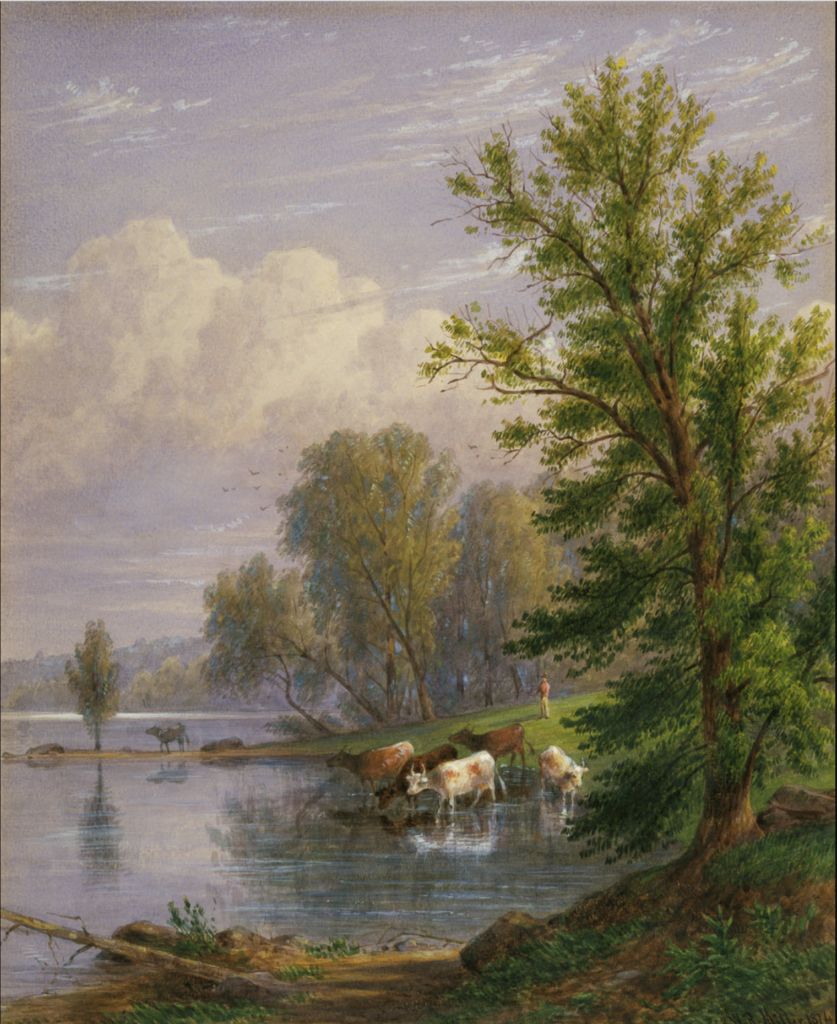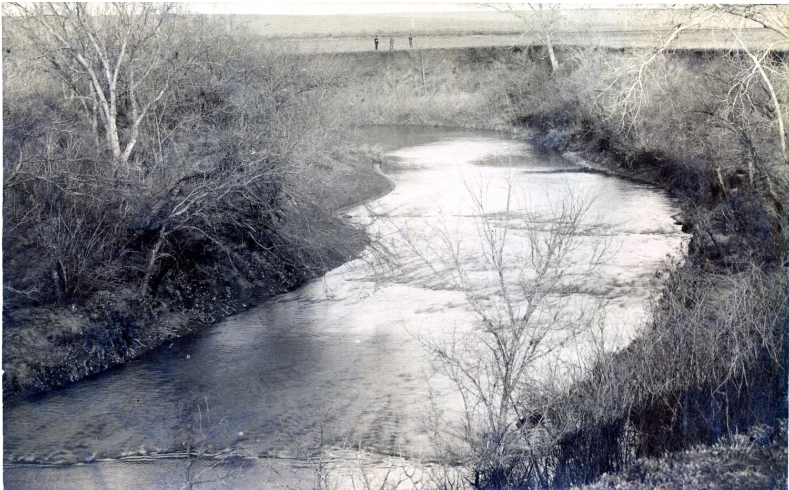Song of the Oktahutchee
By Alexander Posey (Muskogee Creek)
Annotations by Karen Kilcup

Courtesy Smithsonian American Art Museum.
Far, far, far are my silver waters drawn;[1] The hills embrace me loth to let me go; The maidens think me fair to look upon, And trees lean over, glad to hear me flow. Thro’ field and valley, green because of me, I wander, wander to the distant sea. Tho’ I sing my song in a minor key, Broad lands and fair attest to the good I do; Tho’ I carry no white sails to the sea, Towns nestle in the vales I wander thro’; And quails are whistling in the waving grain, And herds are scattered o’er the verdant plain.
Posey, Alexander. “Song of the Oktahutchee.” Indian School Journal 6, no. 10 (April 1910): 30
[1] The poem speaks in the river’s voice.
Contexts
The Indian School Journal was the official publication for the Chilocco Indian Agricultural School (also known as the Haworth Institute, the Chilocco Indian Agricultural School, and the Chilocco Indian School). Located in north-central Oklahoma near the Kansas border, it began taking students in 1884, enrolling 150 from seventeen tribes that first year. Enrollment had more than doubled by 1895, with students coming from various tribes, including the Cherokee, Cheyenne, Arapaho, and Pawnee tribes. The Oklahoma Historical Society notes that “significant enrollment from the so-called ‘Five Civilized Tribes’ did not occur until after 1910 but by 1925, Cherokee constituted the largest single tribal affiliation at the school (26 percent of approximately nine hundred students).” Following World War II and the expansion of public education, the school enrolled mostly students who lacked access to such education.
Like most federally funded Indian schools, Chilocco sought to assimilate Native children into white society. Also like other schools, it stressed “industrial” education—manual and domestic labor—over academic pursuits, aiming to train them as workers for white families. Education at Chilocco was notably militaristic; students attended weekly Christian religious services, also intended to weaken their ties to family and tribe. In the 1950s, student numbers peaked at around 1300, and the school closed in 1980.
Muskogee Creek poet, journalist, and humorist Alexander Posey was a nationally known writer whose appearance in the school’s magazine suggests his powerful influence on young Native American readers. Following his tragic death by drowning in the Oktahutchee River, this poem’s subject, when he was only 34 years old—and only a few months after The Indian School Journal published several poems—his wife Minnie collected his work in The Poems of Alexander Lawrence Posey. His evocative poetry is also available through the Academy of American Poets (poets.org) and The Adrian Brinkerhoff Poetry Foundation. The Posey poems appear in The Envious Lobster as versions he published in the school’s magazine.
This poem celebrating the Oktahutchee is especially poignant, given the poet’s close connection to the river.
Resources for Further Study
- Archuleta, Margaret L., Brenda J. Child, and K. Tsianina Lomawaima (Mvskoke/Creek Nation of Eastern Oklahoma, not enrolled), eds. Away from Home: American Indian Boarding School Experiences, 1879-2000.
- Connelley, William Elsey. “Memoir or Alexander Lawrence Posey.” In The Poems of Alexander Lawrence Posey. Ed. Mrs. Minnie H. Posey. Topeka, KS: Crane and Company, 1910. Pp. 5-65.
- Higgs, Richard. “The Oktahutchee Claims One of Its Own.” This Land, April 10, 2013.
- Littlefield, Daniel F. Jr. Alexander Posey: Creek Poet, Journalist, and Humorist. Lincoln: University of Nebraska Press, 1992.
- Lomawaima, K. Tsianina (Mvskoke/Creek Nation of Eastern Oklahoma, not enrolled). “Chilocco Indian Agricultural School.” The Encyclopedia of Oklahoma History and Culture. Oklahoma Historical Society.
- Lomawaima, K. Tsianina. (Mvskoke/Creek Nation of Eastern Oklahoma, not enrolled). They Called It Prairie Light: The Story of Chilocco Indian School (1995). https://www.amazon.com/They-Called-Prairie-Light-Chilocco/dp/0803279574.
- Wilson, Linda D. “Posey, Alexander Lawrence (1873-1908).” The Encyclopedia of Oklahoma History and Culture.
Contemporary Connections
“At Length with K. Tsianina Lomawaima.” At Length with Steve Scher. February 10, 2016.
“Chilocco Through the Years.” Firethief Productions. Chilocco History Project, August 2, 2019.
Douglas, Crystal. “A Look at the Chilocco Indian School.” The Kaw Nation: People of the Southwind.
Fife, Ari. “At one former Native American School in Oklahoma, honoring the dead now falls to alumni.” The Frontier, July 21, 2021.

by J. C. Chrisney.
The Oktahutchee River was known to white settlers as the North Canadian.